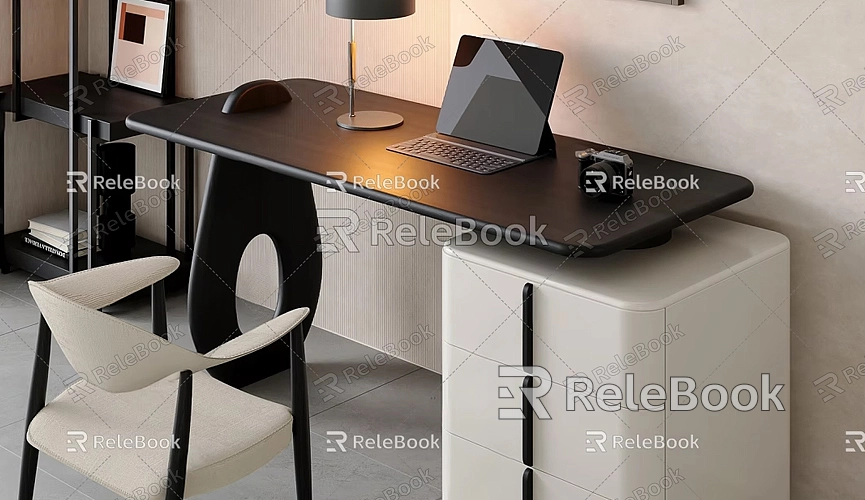How to Share Free SketchUp Models
SketchUp is one of the most popular 3D modeling software tools today, widely used in fields such as architecture, interior design, landscape planning, and urban modeling. With its ease of use, powerful functionality, and extensive expandability, SketchUp is favored not only by professional designers but also by hobbyists. However, the appeal of SketchUp extends beyond its modeling capabilities—it's also about how it helps designers showcase and share their creativity and work. For many designers, once they've completed a beautiful SketchUp model, the question of how to share it—especially for free—becomes a critical issue.
This article will explore how to effectively share free SketchUp models, helping designers present their creations to a global audience, increase exposure for their work, and provide a platform for others to learn from and draw inspiration.
Why Share Free SketchUp Models
The significance of sharing SketchUp models goes beyond simply showcasing one's work. First, it is a way to increase personal visibility and influence. In the design world, especially in architecture and interior design, the exposure of one's work is crucial for career development. By sharing models, designers can display their creativity and skills to a wider audience, gaining potential clients, collaboration opportunities, and industry recognition.
Second, sharing free models helps build a stronger designer community. Designers can interact and discuss their work with peers, exchange design experiences and techniques. This collaboration and interaction not only helps individuals improve their design skills but also fosters knowledge sharing and innovation in the industry.
Additionally, sharing free models offers other designers, especially beginners who are new to SketchUp, the opportunity to learn and gain inspiration. By examining and analyzing high-quality 3D models, learners can understand different design styles, techniques, and workflows, thus improving their own modeling skills and design abilities.
How to Share Free SketchUp Models

With technological advancements, designers now have many ways to share their SketchUp models. Whether through specialized 3D model platforms, personal websites, cloud storage, or social media platforms, designers can easily present their creations to a global audience. Below, we will explore several common methods for sharing models.
1. Sharing via 3D Model Platforms
Today, many websites and platforms specialize in offering 3D model sharing features for designers. These platforms not only support SketchUp model uploads but also provide convenient search and browsing options, making it easier for other users to find your work. Here are a few popular 3D model sharing platforms.
Relebook
Relebook is a very popular 3D model library and 3D texture resource platform that allows designers to upload their SketchUp models, 3D models, and textures to share with other designers worldwide. On Relebook, designers can not only showcase their work but also download and use models uploaded by others, making it an excellent resource library for designers.
SketchUp 3D Warehouse
Models uploaded to 3D Warehouse can either be public (allowing anyone to download and use them) or private (accessible only to authorized users). The process of uploading models is very simple—SketchUp users can upload models directly through the software, and during the upload, they can even add detailed descriptions, tags, and keywords to increase visibility.
The greatest advantage of 3D Warehouse for designers is its seamless integration with SketchUp. By uploading models directly through the SketchUp interface, models are automatically synchronized with the platform, making it very convenient. Additionally, the platform’s user interface is simple and intuitive, making it ideal for designers who want to share their SketchUp models.
Sketchfab
Sketchfab is a globally recognized 3D model display platform that supports multiple 3D file formats, including SketchUp. Unlike 3D Warehouse, Sketchfab focuses more on interactive model displays. After uploading a model to Sketchfab, users can view it directly in their browser, rotate, zoom, and even explore it in virtual reality (VR), enhancing the immersive experience.
Sketchfab offers a range of features that make it a powerful platform for model sharing. For example, you can add annotations, labels, or embed specific links to enhance user interaction. Additionally, Sketchfab allows models to be embedded in personal websites, blogs, or social media platforms, making it easier for designers to promote their work.
Sketchfab also offers flexible privacy settings, allowing designers to choose whether to share models publicly or restrict access to specific users. This level of freedom makes Sketchfab a popular platform for many designers to showcase and share their models.
TurboSquid
TurboSquid is another highly popular 3D model platform, though it is primarily focused on paid models, it also offers some high-quality free models for sharing. TurboSquid supports multiple 3D file formats, including SketchUp, OBJ, FBX, and 3DS, allowing designers to upload and share models in formats that suit their needs. TurboSquid attracts significant traffic, making it a go-to platform for professionals seeking 3D models.
When uploading a model to TurboSquid, designers must set a price for it, though they can choose to share some models for free. While the platform is mainly geared towards commercial use, sharing free models can still help increase exposure and attract potential clients.

2. Sharing via Personal Websites or Blogs
If you prefer complete control over the sharing and download process, you can choose to share your SketchUp models via your personal website or blog. With your website, you can not only display your design work but also provide detailed descriptions, tutorials, design philosophies, and more, offering visitors a fuller understanding of your work. This method is ideal for designers who want to showcase independent creations and build traffic through their websites.
To share SketchUp models via your personal website, you'll first need to upload the models to your website’s server or use a cloud storage service (such as Google Drive or Dropbox) to provide download links. To make it easier for users to download models, designers can package the model files into a .zip file to avoid confusion when uploading multiple folders.
When sharing models on your website, you can add detailed text descriptions for each model page, explaining the construction process, materials used, and the thought behind the design. Additionally, embedding interactive elements (like 3D models from Sketchfab) on your website can improve the user experience.
3. Using Cloud Storage Services
For designers who don’t want to use specialized 3D model platforms, cloud storage services offer a simple and convenient way to share models. Platforms like Google Drive, Dropbox, and OneDrive allow designers to upload SketchUp model files and generate shareable links. Users can then click the link to directly download the files.
The advantage of cloud storage services is that they are easy to use and require little learning. However, the downside is that these services don’t support online browsing or interactive viewing of models, meaning users can only view the models after downloading them. This method is best for quickly sharing models without the need for complex interactions.
4. Sharing via Social Media Platforms
Social media is another great channel for promoting and sharing SketchUp models. Designers can post links to their shared models or showcase screenshots on platforms like Facebook, Twitter, and Instagram, attracting followers and potential clients. Additionally, social media platforms provide various interactive features, such as comments, likes, and shares, to increase exposure.
Designers can host model files on other platforms (such as Google Drive or Sketchfab) and then share the download or display links on social media. By sharing models through social media, designers can not only boost visibility but also interact with other designers, receiving feedback and suggestions.
Optimization Tips for Sharing SketchUp Models
While sharing SketchUp models may seem simple, to ensure your models are successfully shared and gain widespread attention, designers should consider optimizing their models. Below are some common optimization tips to help improve the effectiveness of sharing models.
1. Optimize Model File Size
Large SketchUp files can slow down upload and download speeds, negatively affecting the user experience. Therefore, before sharing, designers should optimize their models to reduce file size. Common optimization methods include:
· Deleting unnecessary components and details
· Using lower-resolution textures
· Compressing file formats to eliminate excess content
By streamlining the model, designers can improve loading times and ensure compatibility across different platforms.
2. Improve Model Quality
In addition to file size, the quality of the model is a key factor in successful sharing. High-quality models not only attract more viewers but also enhance the designer's professional image. Ensure your model has clear details, correct proportions, and accurate texture mapping. If needed, using high-quality textures and HDRI (High Dynamic Range Imaging) can significantly improve realism and visual appeal.
If you need high-quality 3D textures and HDRI for creating models and virtual scenes, you can download them for free from https://textures.relebook.com/. Relebook offers a wide range of textures to help improve the details and quality of your work. Additionally, if you need beautiful 3D models, you can download them from https://3dmodels.relebook.com/, where you’ll find many high-quality models to improve your designs.
3. Add Detailed Descriptions and Tags
When uploading a model, be sure to add clear descriptions and tags. Descriptions help users understand the model’s purpose, design concept, and production process, while tags improve visibility in search engines. By including these details, potential users can more easily find your model and understand its features and value.
Sharing free SketchUp models is an important way for designers to showcase their creativity, increase professional exposure, and build a designer community. By using specialized 3D model platforms, personal websites, cloud storage services, and social media platforms, designers can easily share their work with a global audience and gain more attention and feedback.
When sharing models, designers should focus on optimizing file
size, improving model quality, and adding clear descriptions and tags to ensure their models are properly displayed and attract the right audience. By following these tips, designers can not only enhance their professional image but also help other designers and learners gain inspiration and knowledge.

